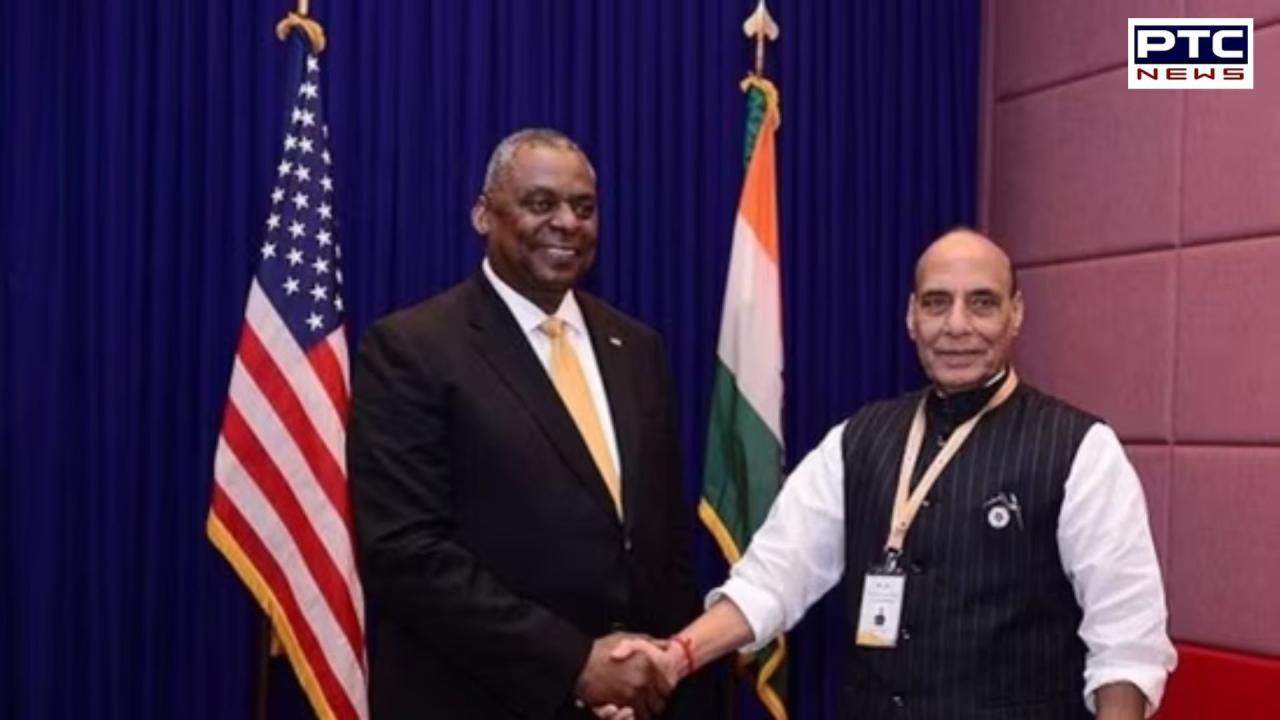- April 3, 2025
- Updated 2:22 am
Rajnath Singh heads to US after defence panel clears predator drones and QUAD agreements
PTC News Desk: Defence Minister Rajnath Singh is set to embark on a significant five-day visit to the United States starting on August 21. The trip follows the Indian Defence Acquisition Council (DAC)’s approval of the MQ-9B Predator drone deal with certain amendments, as well as the Indian Navy’s partnership with HawkEye 360 under the QUAD Indo-Pacific Partnership of Maritime Domain Awareness (IPMDA). The DAC meeting that gave the green light to these developments took place on July 31.
During his visit, Singh will meet with U.S. Secretary of Defense Lloyd Austin at the Pentagon on August 23 to further strengthen defence cooperation between the two nations. The much-anticipated India-U.S. armed UAV deal, which has been in the works for some time, has now been finalised after the DAC approved changes related to the level of indigenisation and the integration of an anti-shipping missile developed by the Defence Research and Development Organisation (DRDO) onto the Predator drones.
The indigenisation percentage for the deal now stands at 30%, although the idea of incorporating the DRDO missile into the MQ-9B Predator was dropped due to the high costs quoted by General Atomics for the integration process.
The Predator deal includes the acquisition of 31 UAVs by India at an estimated cost of $3.9 billion, which will also include missiles and guided bombs. In addition to this, the Indian government has approved the Indian Navy’s involvement in the IPMDA, a strategic initiative announced by the QUAD nations in May 2022. This participation means that the Indian Navy will collaborate with HawkEye 360, a commercial operator with a fleet of around 36 satellites, to enhance transparency in the Indo-Pacific region. The partnership will provide detailed intelligence to QUAD nations on various activities, including dark shipping, terrorism, drug trafficking, arms trafficking, and the movement of adversarial vessels that turn off their transponders to avoid detection.
HawkEye 360’s satellites are capable of detecting any radio frequency emissions from vessels that have deliberately switched off their transponders, a tactic often used by pirates and terrorists in regions like the Gulf of Aden and the Arabian Sea. The IPMDA initiative is designed to ensure that QUAD nations remain aligned in their efforts to maintain freedom of navigation in the contested waters of Southeast Asia.
The Indian Navy is expected to formalize its partnership with HawkEye 360 once it receives the necessary instructions from the government. Meanwhile, the transfer of technology deal for GE-414 engines, which will power India’s Tejas Mark II fighter jets, is progressing as planned. However, there has been a delay in the delivery of GE-404 engines, which are crucial for the Tejas Mark IA fighters. India has raised this issue with the U.S., and it is anticipated that Defence Minister Singh will stress the urgency of the situation during his visit.
In addition to discussing bilateral defence matters, Singh’s U.S. trip will also include exchanges on the challenges posed by rising Asian powers like China and the threats from non-state actors using drones to target merchant shipping, particularly in the aftermath of the Israel-Gaza conflict. Notably, Singh’s visit to the U.S. coincides with Prime Minister Narendra Modi’s state visit to Poland and Ukraine, which is also scheduled for the same period.
Also Read: Raksha Bandhan 2024: History, significance, celebrations, and city-wise shubh muhurat details
Recent Posts
- Crown of goddess Kali, gifted by PM Modi, stolen from temple in Bangladesh
- Hezbollah leader survives assassination attempt amid Israeli strikes that kill 22 in Beirut
- ਕ੍ਰਿਕਟ ਦੇ ਬਦਲੇ ਨਿਯਮ, ਹੁਣ ਇਸ ਕੇਸ ‘ਚ ਦੁਬਾਰਾ ਨਹੀਂ ਮਿਲੇਗੀ ਬੈਟਿੰਗ, ਮੰਨਿਆ ਜਾਵੇਗਾ
- ਸਚਿਨ ਤੇਂਦੁਲਕਰ ਦੇ ਬਰਾਬਰ ਪਹੁੰਚੇ ਜੋ ਰੂਟ, ਪਰ ਵਿਰਾਟ ਦੇ ਇਸ ਰਿਕਾਰਡ ਤੋਂ ਅਜੇ ਵੀ ਦੂਰ
- Ratan tata death: ਸਿਰਫ ਵੋਲਟਾਸ ਹੀ ਨਹੀਂ, ਸਵੇਰ ਤੋਂ ਰਾਤ ਤੱਕ ਤੁਹਾਡਾ ਕੰਮ ਟਾਟਾ ਦੇ ਬਿਨਾਂ ਨਹੀਂ ਚੱਲ ਸਕਦਾ
